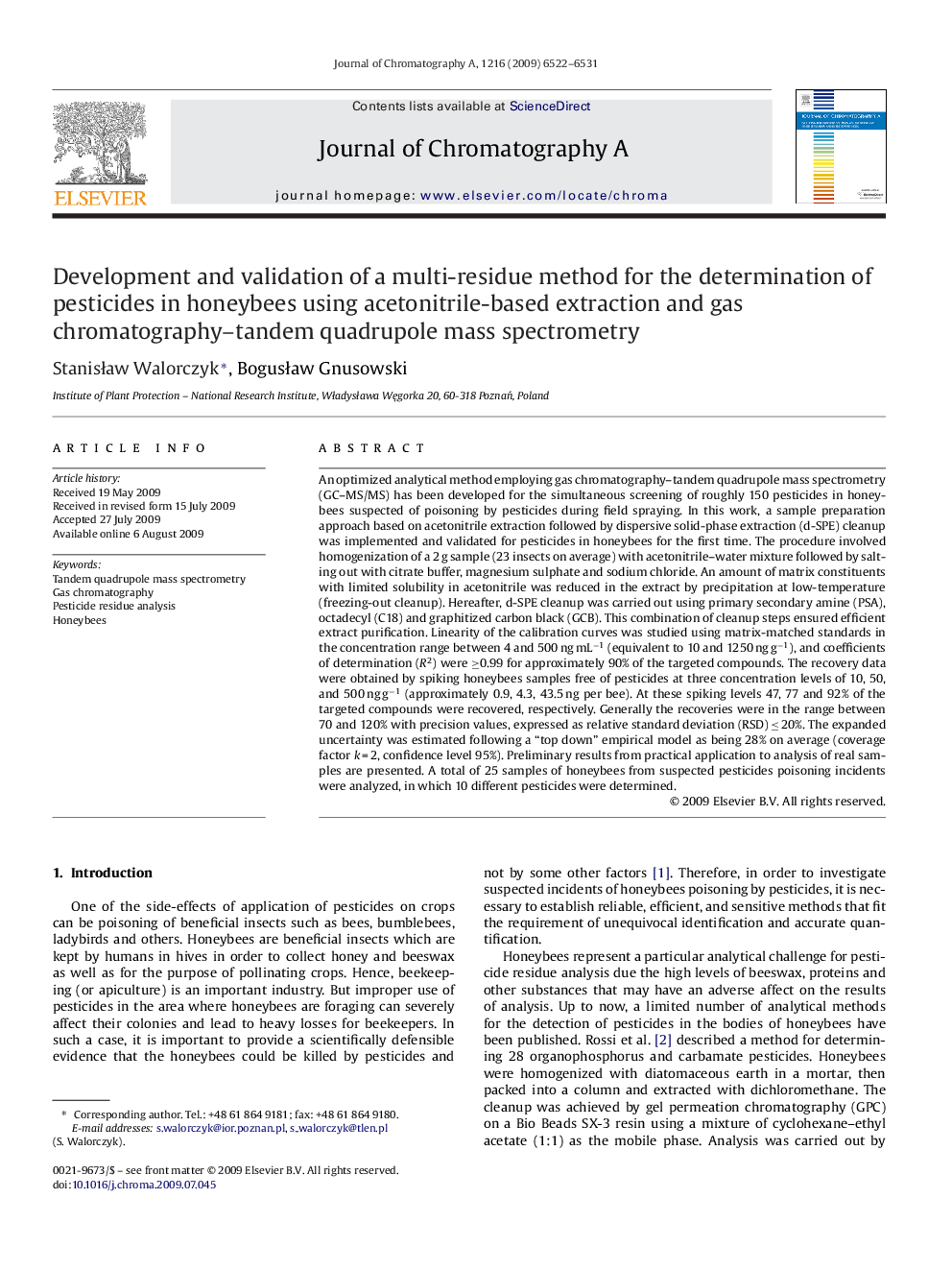| کد مقاله | کد نشریه | سال انتشار | مقاله انگلیسی | نسخه تمام متن |
|---|---|---|---|---|
| 1205932 | 965212 | 2009 | 10 صفحه PDF | دانلود رایگان |

An optimized analytical method employing gas chromatography–tandem quadrupole mass spectrometry (GC–MS/MS) has been developed for the simultaneous screening of roughly 150 pesticides in honeybees suspected of poisoning by pesticides during field spraying. In this work, a sample preparation approach based on acetonitrile extraction followed by dispersive solid-phase extraction (d-SPE) cleanup was implemented and validated for pesticides in honeybees for the first time. The procedure involved homogenization of a 2 g sample (23 insects on average) with acetonitrile–water mixture followed by salting out with citrate buffer, magnesium sulphate and sodium chloride. An amount of matrix constituents with limited solubility in acetonitrile was reduced in the extract by precipitation at low-temperature (freezing-out cleanup). Hereafter, d-SPE cleanup was carried out using primary secondary amine (PSA), octadecyl (C18) and graphitized carbon black (GCB). This combination of cleanup steps ensured efficient extract purification. Linearity of the calibration curves was studied using matrix-matched standards in the concentration range between 4 and 500 ng mL−1 (equivalent to 10 and 1250 ng g−1), and coefficients of determination (R2) were ≥0.99 for approximately 90% of the targeted compounds. The recovery data were obtained by spiking honeybees samples free of pesticides at three concentration levels of 10, 50, and 500 ng g−1 (approximately 0.9, 4.3, 43.5 ng per bee). At these spiking levels 47, 77 and 92% of the targeted compounds were recovered, respectively. Generally the recoveries were in the range between 70 and 120% with precision values, expressed as relative standard deviation (RSD) ≤ 20%. The expanded uncertainty was estimated following a “top down” empirical model as being 28% on average (coverage factor k = 2, confidence level 95%). Preliminary results from practical application to analysis of real samples are presented. A total of 25 samples of honeybees from suspected pesticides poisoning incidents were analyzed, in which 10 different pesticides were determined.
Journal: Journal of Chromatography A - Volume 1216, Issue 37, 11 September 2009, Pages 6522–6531